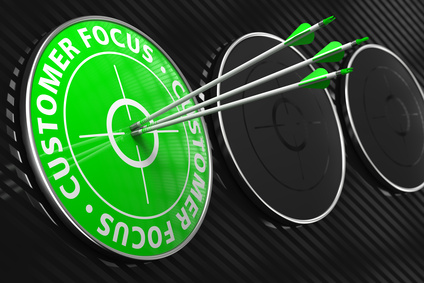
Success begins and ends with your customers.
I recently was the subject of what’s called a “member spotlight” Q&A (question and answer) session about my business. Knowing my business centers on the supply chain, my interviewer asked me to draw a picture of a supply chain. It’s always a good place to start as there are countless definitions of what people mean when they say “supply chain management”.
In my case, I drew a web of interconnected points spanning from your supplier’s supplier through manufacturing and distribution to your customer’s customer. Afterwards, my interviewer asked me, “Why do you always start with the end of the diagram – going out from the manufacturer to the customer?” I never realized I did that before she asked the question; however, it makes sense. Success begins and ends with “your customers”.
There are many ways to think about your customers – some a waste of time and others will lead to tangible results. A few strategies which have proven successful include: 1) Understand your customer. 2) Who is Customer Service? 3) Collaboration
#1) Understand your customer: First, it’s essential to know your customers. Do you know what they want in terms of quality and service requirements? Of course, everyone wants “the best quality, more for less, delivered quicker”; however, what does your customer value such that he/she would be willing to pay for it? Those familiar with the Toyota Production System or Lean might have heard this before; however, I consider it uncommon, common sense – find out what your customer wants!
In addition, the most successful executives not only understand their customers’ quality and service requirements but they also understand their customers’ career and personal goals. People do business with people they know, like and trust. You must start with “know”.
#2) Who is Customer Service? I’d be remiss if I didn’t include at least a short paragraph in making this point. EVERYONE at your company is a face to your customers. Don’t leave it to Customer Service alone. With social media and the extensive webs of relationships which are common in today’s marketplace, you must consider all employees as being the face to the customer.
#3) Collaboration: In today’s business environment, there is nothing more important than thinking “collaborative”. Undoubtedly, my most successful clients are collaborating on forecasts, orders, market strategies, new products, etc. Those thinking win-lose negotiating are being left in the dust. For example, it is common to collaborate with customers on placing orders. These programs have many different names ranging from vendor managed inventory to consumption-based ordering to auto replenishment, yet they all boil down to the same base process: The supplier figures out what to send to the customer’s distribution centers at what time in order to keep the customer at the desired service level and inventory level.
Thus, there is an opportunity for a win-win as the supplier can optimize its inventory and efficiencies while providing exceptional service for the customer. The benefits don’t stop there – as the supplier and customer partner together, frequently the business grows to boot. For example, with improved service and product availability, the customer’s business increases which stems to the supplier’s business as well. Additionally, as the partnership strengthens, the customer tends to want to do more business with the supplier who has best supported them, and so the supplier’s portion of business increases.
There’s no reason why the benefits have to stop with collaborative orders. If you start with a strategy of collaboration, there is no end to the opportunities. Consider collaborative forecasts. If suppliers have a better idea of what is likely to be sold, they will be more successful with service and costs. The best partnerships will share in collaborative benefits, thereby creating substantially more value.
Think about collaborative logistics programs. Where are your distribution centers? What are your lead times? What about your customers? Can you leverage each other’s networks to create a win-win? Can you coordinate to optimize pallet footprints, truckloads, packaging etc.? I recently saw one of my first mentors who said I used to say HUGE a lot. I don’t remember it, but this seems an appropriate time to honor him…..HUGE opportunities exist.
Have you considered collaborative R&D and product development? How about collaboration with your customers and suppliers? This will bring your supply chain closer together.
In every strategy, project, quarterly goal etc., start by thinking of your customer. My most successful clients do not let customers get anything they want; however, they treat customers as true business partners. How important do you consider your customers?


